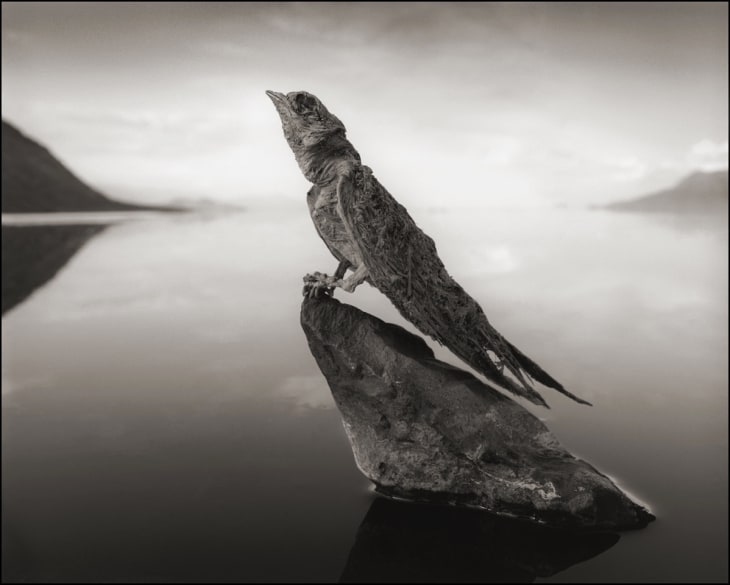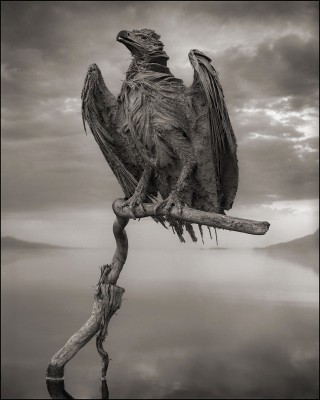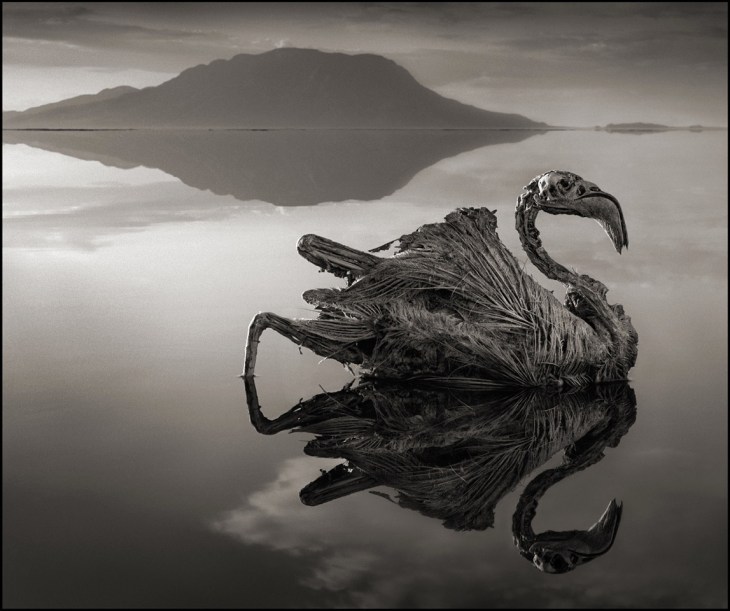Lake Natron is situated near the Kenyan border in Tanzania. It’s a salt lake that fluctuates in size drastically due to frequent evaporation. This causes salt to gather in high quantities. Because of the high salt content nothing lives in the lake save for cyanobacteria which thrives here and gives the lake a signature red tint.
In truth, the lake isn’t entirely dead otherwise. There are two species of fish that are able to survive along the edges of the lake where the salinity is lower. Birds also come to feed on the algae and fish that live here.

There are also flamingoes. Roughly two and a half million of them, a single large flock, depend on the lake as their only breeding ground. Nests are built on seasonal islands that emerge from the lake as it evaporates. While the flamingoes have adapted to the extreme environment here, to almost every other species on earth, the high pH of the water makes it unlivable.
The caustic environment provides a natural barrier to predators, but what’s most interesting about Lake Natron is what emerges alongside the islands when the water evaporates. Mummies.
The high pH along with high levels of a natural compound Natron, the lakes namesake, literally calcify any animal that falls into the water. The water preserves the bodies and encrusts them in a layer of stone like Han in carbonite.
When the water evaporates the bodies emerge along the edges of the lake. The site must be something to behold, it inspired photographer Nick Brandt to take a series of pictures posing the mummified birds and bats in lifelike positions. The photographs are stunning, sad and beautiful at once.





Of the experience, Brant said:
The notion of portraits of dead animals in the place where they once lived is what also drew me to photographing the creatures in the Calcified series: I unexpectedly found the creatures – all manner of birds and bats – washed up along the shoreline of Lake Natron in Northern Tanzania. No-one knows for certain exactly how they die, but it appears that the extreme reflective nature of the lake’s surface confuses them, and like birds crashing into plate glass windows, they crash into the lake. The water has an extremely high soda and salt content, so high that it would strip the ink off my Kodak film boxes within a few seconds. The soda and salt causes the creatures to calcify, perfectly preserved, as they dry. I took these creatures as I found them on the shoreline, and then placed them in ‘living’ positions, bringing them back to ‘life’, as it were. Reanimated, alive again in death.
The photos are being displayed at the Hasted Kraeutler Gallery in New York, you can also pick up Brandt’s photo book Across the Ravaged Land.